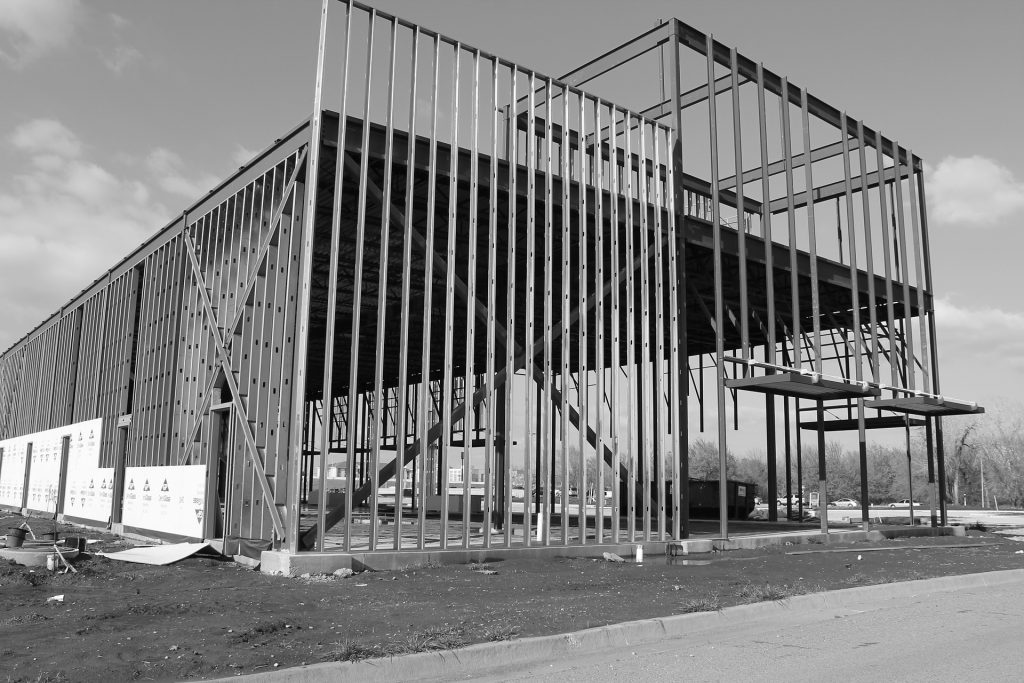4 Advantages of Using Steel Framed Buildings

Structural steel is a poplar choice for new buildings, both due to its versatility and due to the advantages that it offers to the owners. Many of those benefits are economic in nature, which leads to a strong financial inventive for many builders to use steel frames for their buildings. Others are environmental or social, which can help to motivate builders who care for their communities. It is important for builders and clients to understand the advantages that steel has to offer to make sure they can make an informed choice for their new building.
Rapid Construction
Good managers know that time is money. At the most basic level, a long project will have higher labor costs than a short one. Long construction times also force the new owner to wait longer to put their building to use, which can lead to missed opportunities for the business. Anything that encourages quick construction without sacrificing quality is precious.
Steel can do exactly that. The components are ready to assemble as soon as they arrive on the site, and they snap together fairly quickly. Steel manufacturers tend to be very precise, so the workers in the field do not need to measure the pieces or cut them down to the right size. That cuts down on human error to ensure that the workers will not waste time fixing mistakes. Few materials allow for faster construction, which makes steel very appealing to people who need to get the job done on a tight timetable.
High Value
Steel is one of the most economical choices for new construction. The cost of the materials tends to be low, but the real savings come from the construction process. Steel buildings need less labor than others, which dramatically reduces the cost of construction. Unlike concrete buildings, there are no disposable forms that need to be constructed and thrown away to get all of the pieces in the right shape. Even the cost of bringing materials to the construction site tends to be lower because of their low weight and volume compared to the other options.
While all of these factors are small when measured individually, the total savings are quite large. Local factors will always have a big impact on the cost of a building, but steel will be the most economical material for most projects that can make use of it.
Environmental Benefits
Steel buildings are generally better for the environment than those made from other materials. One of the biggest factors is the ease with which steel can be recycled. Reusing old steel drastically reduces the amount of energy that is necessary to produce the steel components, which makes it favorable to most other materials. Most steel is recycled in order to lower the cost of production, so it is easy to find this low-energy material.
Quick construction also saves energy. Construction equipment usually requires a lot of fuel, so anything that can reduce the amount of work needed to produce a structure will make it better for the environment. Steel frames are also lighter than most other materials, which reduces the amount of fuel that must be expended to get them to the building site. The combination of these factors make steel one of the best options from an environmental perspective, especially when combined with other green building practices.
Easy Maintenance
Steel buildings require relatively little maintenance to remain in good shape over the years. Steel does not rot like wood does, and there are no pests that eat away at it over time. While rust can be a factor with some types of steel, proper construction techniques can ensure that it does not turn into a problem.
It is also a remarkably durable material, so it is unlikely that it will wear down over time or receive catastrophic damage from the environment. It is strong enough to resist heavy loads, such as those that can come from sudden snow storms, and modern buildings are good at resisting high winds. It remains vulnerable to truly massive impacts, but the same can be said of almost every other building material, so steel still comes out ahead in the vast majority of scenarios.

















